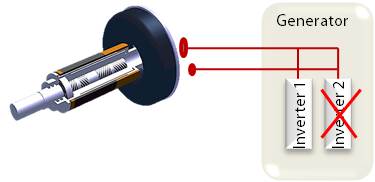INCREASED ROOM UTILIZATION, ONE SYSTEM THAT WORKS LIKE TWO

Today’s high volume and variety of procedures make a “shared” lab essential for better departmental throughput and workflow in your hospital. Canon’s Infinix-i Dual plane system have been designed for flexibility. Our exclusive configurations drive efficient resource utilization, across multiple clinical disciplines. Perform both cardiovascular and peripheral procedures in one room, without compromising image quality. The system features two independent C-arms: a large detector (30 x 40 cm) dedicated to vascular and a smaller detector (20 x 20 cm) dedicated to cardiac imaging.
INTUITIVE OPERATION
All Infinix-i systems utilize intuitive tableside controls, with an ergonomic hyperhandle, to provide all exam functions at the touch of a button. Once you’ve learned the system, you can intuitively manipulate the system by touch.

Higher Productivity With Parallel Processing
Simultaneously processing and transferring image data during acquisition yields quick, efficient exams. For example, during fluoroscopy and fluorography, operators can prepare for the next scheduled patient, process and save images from a previous (or current) study, and transfer or archive images to an associated network.
Automate Procedures
Physicians can quickly navigate through any procedure with Canon’s innovative Sequential Navigation. One touch of a button enables navigation through routine settings for each procedure type, while operators can change any parameter throughout the procedure without disrupting Sequential Navigation.


Double Inverter Generator
If one inverter fails the system can continue to work with reduced power.
Double safety = half risk

Backup Focus
Canon’s unique safety concept for the X-ray tube. In case of malfunction of a focus during the intervention the system switches automatically to the backup focus to keep the system working without any interruption.
Double safety = half risk

Data integrity
Data integrity is always maintained with an advanced Level 5 RAID system which acquires and stores images at extremely high speeds by writing all data to a series of drives, including a parity disk. If a problem occurs on any drive, the parity disk restores missing or damaged data in real time without interfering with procedures.
True multitasking enables you to do many things in parallel in the control room and independently of the ongoing procedure which significantly reduces your overall procedure time and therefore patient and operator dose.
Post-processing tasks such as image processing, image archiving, vessel analysis, image transfer to or from the network, CD creation can be carried out at any time without disturbing the ongoing examination.